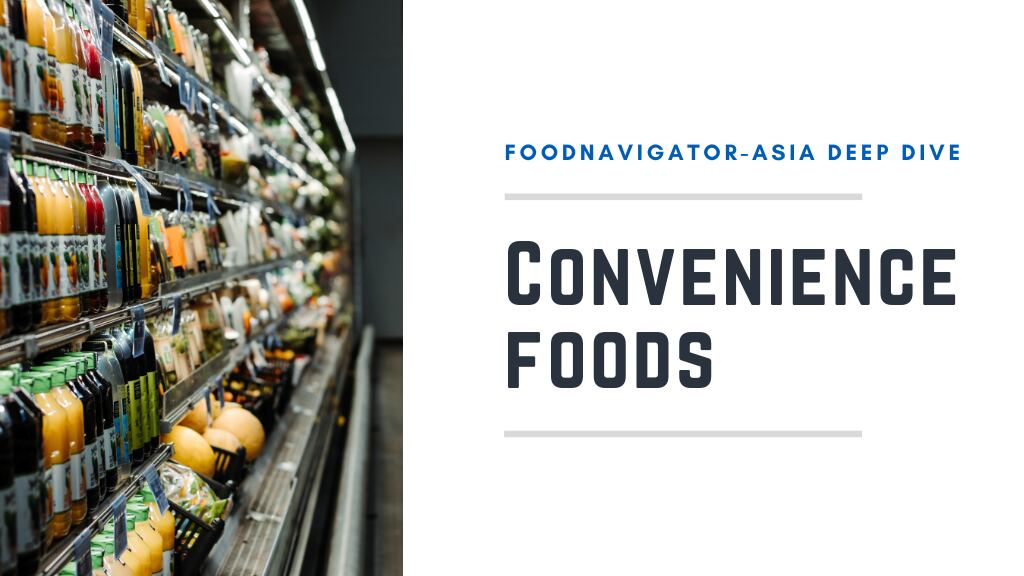In this edition of the FNA Deep Dive, we zoom in to take a closer look at convenience foods. which have many different definitions in the F&B industry, from being easy to prepare and clean-up after finishing, to being convenient to find and purchase, to being suitable to eat in any occasion from the office to the car.
The types of food and beverage products that have been deemed to fall into this category are even more wide-ranging, from ready-to-cook (RTC) meal kits to ready-to-heat (RTH) options like frozen pizza to prepackaged snacks to even fruits such as bananas or apples that can be consumed as is.
Given its broad range, it is difficult to definitively determine the growth of the convenience foods category as a whole, but there is clearly positive momentum across the board.
For instance, within the Asia Pacific region the ready-to-eat (RTE) meals and instant soup categories taken together are have been predicted to grow at a 7.68% CAGR from US$331.90bn in 2022 to an estimated US$480.5bn by 2027; whereas the snacks category is expected to grow at a 7.9% CAGR to hit US$1.15tn by 2026.
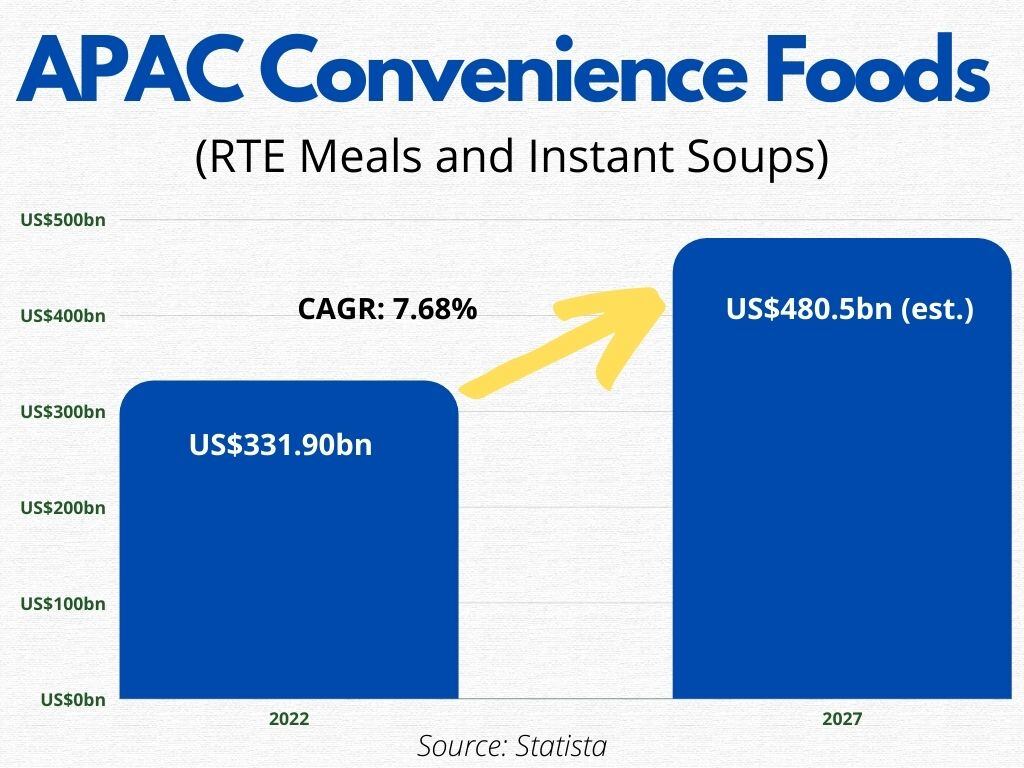
Many research organisations have pegged a rising need for convenient food amidst the pandemic as a key growth driver for these various markets, and many food and beverage firms in the APAC region have been responding to this trend by skewing product innovation accordingly.
One such example is Thailand’s Balance Corp, which seeks to provide the nutrients of a balanced diet in a convenient snacking format.
“We have found the snacking format to be a popular one [in today’s market and] all of our planned products can be consumed conveniently [based on this concept], for instance we have our plant-based balanced savoury snack brand MUNCHHH which contains protein, carbohydrates and fibre in equivalent amounts to that of a balanced diet – but in a snack format, to be eaten just like chips,” Balance Corp Founder Norawee Bussadeegarn told FoodNavigator-Asia.
“We’ve also looked beyond this to look at other formats to provide consumers with various health benefits in the most convenient formats possible, such as our PETITS nutrient-packed chocolate ball snacks that can be consumed as a meal replacement [by just popping] one in.
“There’s also our Flying Bear gummy bears which are sugar-free and high in fibre – for these, we intend to infuse them with additional supplements and extracts to provide the benefits of things like nootropics, cognitive enhancement, Ayurvedic herbs, ginseng, Thai herbs and so on, so the consumer can get these benefits by simply chewing a gummy sweet.”
Watch the video below to find out more.
Fusing health and convenience
Balance Corp is not alone in its endeavours to make healthier choices more convenient – even firms that started out with a focus on making ingredients targeted at the initial home baking craze that took over the region during the pandemic are now opting to create products that can give consumers more instant gratification.

One of these is ASEAN-based Swiftlet, which was formed during the pandemic with an initial focus on its sugar replacement blend, a ‘world-first’ in terms of being zero-GI, zero calorie and probiotic-enriched.
‘We want to look at elevating our portfolio beyond just being an ingredient to turn anything sugar-free, [as this limits its use] to consumers who are focused on cooking or baking at home – they need to have that extra time to do that [which may be scarcer now in light of reduced lockdown restrictions and borders reopening],” Swiftlet Co-Founder Minh Le told us.

“As such, we’re going to be bringing a range of ready-to-use and RTE sugar-free products to the market – things from mixes to cookies and more, which will be much more convenient for consumers to use or just eat directly, without needing to spend as much or even any time in the kitchen before consumption.”
Another, perhaps even more extreme, example of this health-convenience fusion can be found in Singapore’s Asia Bird’s Nest Corporation, which recently launched a bird’s nest product in sachet form as opposed to traditional glass jars.
Bird’s nest is prized in Asia as many consumers believe it has immune system, digestive and skin-related benefits.
“We launched Wellnest – which is bird’s nest extract with Red ginseng and Aronia berry – in sachet form to make it more convenient for consumers to enjoy it at any time of the day, without needing to carry bulky glass jars around or do their own boiling,” Asia Bird’s Net Corporation Director Professor Dr Lim Kah Meng said.
“The aim was really to modernise this healthy product that has been around for centuries, so as to capture the younger consumer demographic by making it more convenient to bring around and consumer and thus be more relevant for them – additionally, this formulation was designed to be highly concentrated so effects can be felt more quickly.”
Easy access
In addition to innovating options for consumers to have convenient healthy food choices, it is also important to ensure that they have convenience of access to these products, or all the innovation would be for naught.
This is the firm belief of snacking giant Mondelez, which already has numerous well-known snack brands under its hat from OREO to Ritz, and apart from increasing healthier options the firm is also focused on ensuring as many consumers have access to its products as possible.

“Via our Mindful Snacking initiatives, Mondelez has long been working to offer products with improved nutrition and ingredient profiles [and to] help consumers make informed choices about their snacking,” Mondelez Malaysia and Singapore Managing Director Narmeen Khan told us.
“[To make it easier and more convenient for them] to make these choices, this year we aim to further extend our portion-controlled formats and less sugar options for a variety of products, including OREO.
“Also importantly, it must be noted that today there is a higher demand and expectation for snacks to be available anywhere, at any time, for different needs, especially in the South East Asian region – this has been fuelled by a big leap forward in digitisation and automation over the last two years.
“[One of our priorities is] to ensure our products remain conveniently accessible the way consumers want them across every retail touchpoint – both on shelf and online, and we have been reinventing our supply chain and channel expansion strategies to do so e.g. keeping our two manufacturing facilities in Malaysia operating smoothly as these play a critical role in facilitating and expediting our response to evolving supply chain requirements in the region.”
Heating it up
The majority of consumers in the APAC region have Asian tastebuds, which usually equates to a preference for foods that are served hot – so oftentimes if hungry enough, cookies or chips may not be the most satisfactory option.
That said, there is no doubt that many consumers here tend to be too tired or too short of time to cook a full meal after work, so foods that can be conveniently prepared and eaten warm are very important to this group – and this is where the RTE, RTC and RTH products come in.
“Many consumers today are tending towards buying foods that are packaged and kept more conveniently, such as frozen foods which are already cooked, then packed and frozen such that these can have a longer shelf life than fresh foods, yet still maintain all the necessary nutrients,” Australia-based Dumpling100 Managing Director Shelley Zhou said.
“This really took off when COVID-19 hit, as the preference was really not to go to stores frequently to buy food, and it was definitely more convenient for them to be able to buy foods they could store for longer in the freezer or in the pantry.
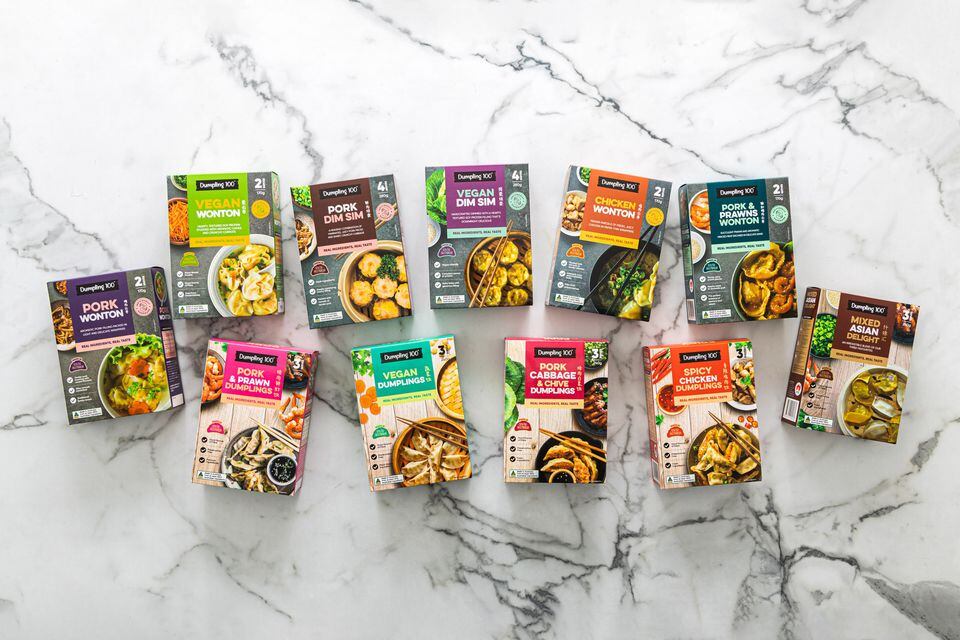
“The other thing was also that a lot of people were under pressure, whether it was financially or from the mental stress of it all, and convenience foods were an option that allowed them to prepare meals with minimal hassle
“For our products for example, all they need to do would be to just check the back of the packaging for how long they need to cook the product based on the method they choose, take out the dumplings or wontons and put them in a plate/wok and then heat up as required – and that would be all, there would be no need to worry about adding anything to get sufficient carbohydrates, proteins or vegetables as they’d all be in that one pack, so incredible convenient.
“The other draw of such RTC, RTE or RTH convenience foods is that it’s easy because it’s hard to go wrong, essentially – the items have already been cooked before being packed, so no matter what you won’t be making a mistake and risking food poisoning or anything in a stressful situation.”
This was seconded by Thailand-based plant-based firm More Meat, which is also launching its first range of RTC products later this year, drawn by numerous consumer demands for these options.
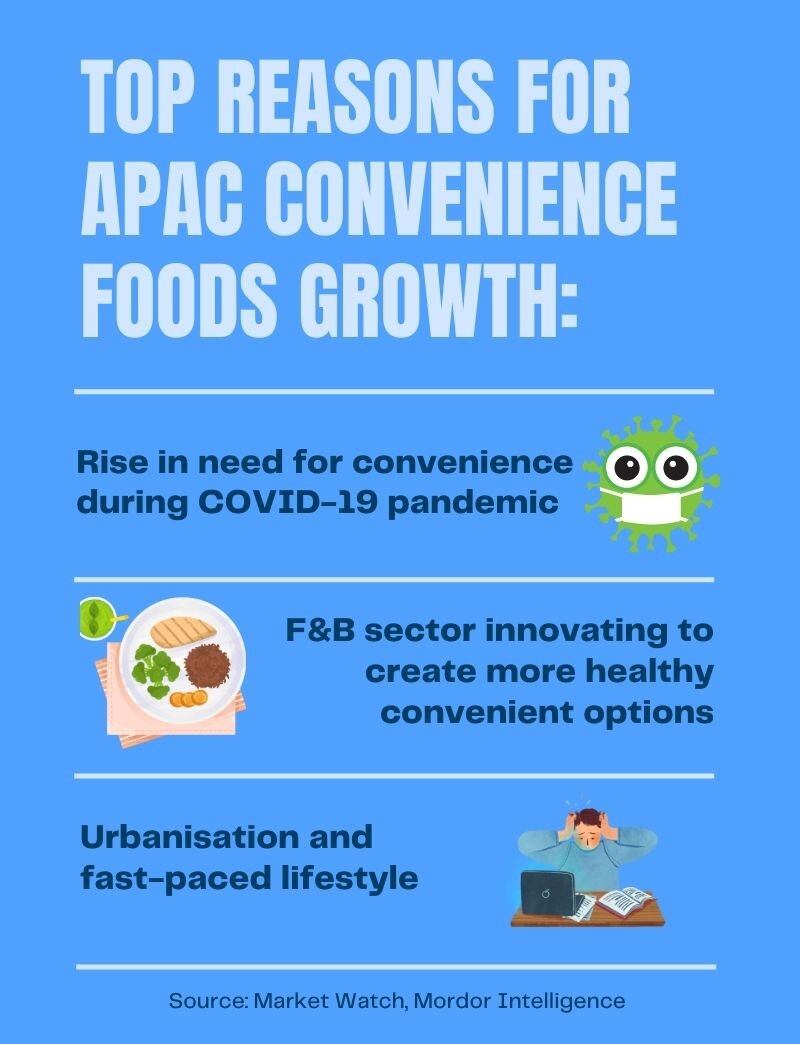
“This was a really interesting one for us, because when we first started the company, the initial idea was really to focus on creating a meat alternative that was as similar as possible to meat in terms of texture and without the use of any flavouring,” More Meat Co-Founder and CEO Kanwra Tanachotevorapong told us.
“This was because here in Thailand the cuisine uses a lot of different herbs, seasonings and sauces as it is, so texture was the main thing we wanted to perfect, especially with people cooking more at home during the pandemic.
“But after launching successfully, we also saw hefty demand from many consumers asking us for more convenient options that required less cooking time and effort, saying that they did not have the time or the energy after work to put in so much effort in the kitchen.
“Hence we decided to launch an RTC line, with a focus on Thai cuisine, carrying six options that can be stir-fried, boiled/steamed or fried – even for the last, the feedback was that they just wanted to use an air fryer and not a deep fryer [to reduce the mess and cleanup], so that emphasis on convenience was something we took into consideration when designing our product innovation.”
Convenience in beverages
It should also be noted that though convenience foods tend to be more prominent, convenience beverages are also growing at a steady rate – particularly in sectors such as alcohol.
This is particularly obvious when taking the large number of ready-to-drink (RTD) alcoholic product launches that have entered the market over the past few years – many major alcohol brands from Kirin to Kavalan have all hopped onto the bandwagon with their own hard seltzer or RTD cocktail ranges, having had to move away from traditional bar-made cocktails out of necessity when lockdowns shut these down.
“The RTD category is expected to grow strongly as these products recruit a broader consumer base, particularly those who are looking for wellness and convenience in their drinking,” Kavalan Brand Ambassador & Global PR Officer Kaitlyn Tsai said.
“This creates a huge opportunity for spirits producers across the world [and in response to these trends] Kavalan has launched RTD cocktails using our whiskey and gin.”
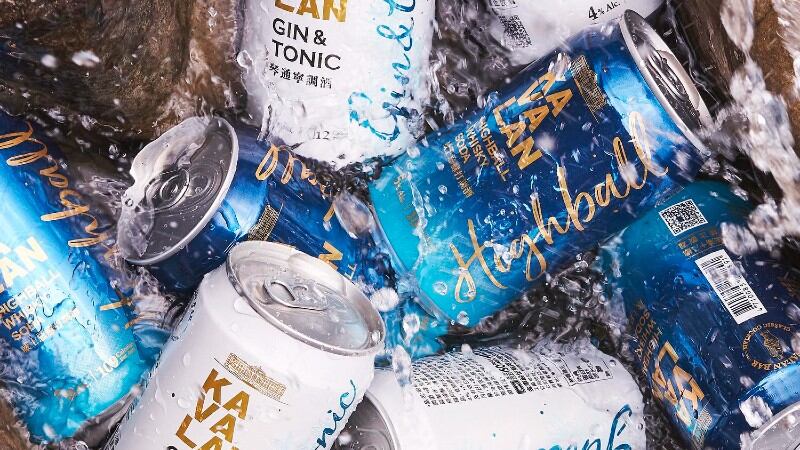
Kavalan’s RTD range includes a Highball Whiskey Soda and a Gin & Tonic made with its Kavalan Classic Single Malt Whiskey and its Kavalan Gin respectively base spirits, and a Kavalan Gin Soda Oolong Tea which combined the gin with charcoal-roasted oolong tea.
Kirin also rolled out its first hard seltzers in Japan under the Smirnoff brand, stressing that the RTD alcoholic drinks trend has been on the rise in the country, especially amongst consumers between the ages of 20 to 30.
“Hard seltzers are expected to take over approximately 11% of Japan’s entire local RTD category sales, predicted to reach US$395mn by 2027, and Kirin also saw that RTD consumption has been growing very rapidly,” Kirin Corporate Communications Assistant Manager Yoko Shiode told us.
“[It is a different experience from needing to open up a vodka bottle, pour out an amount, and then keep the rest] but Smirnoff vodka has already gained a high level of recognition so it is just presented in a more convenient, more stylish format.
“We saw a very strong opportunity here to capitalise on this trend and win over more domestic consumers, and we launched with the Smirnoff Orange & Grapefruit and White Peach flavours which have good reputation and acceptance here.”


